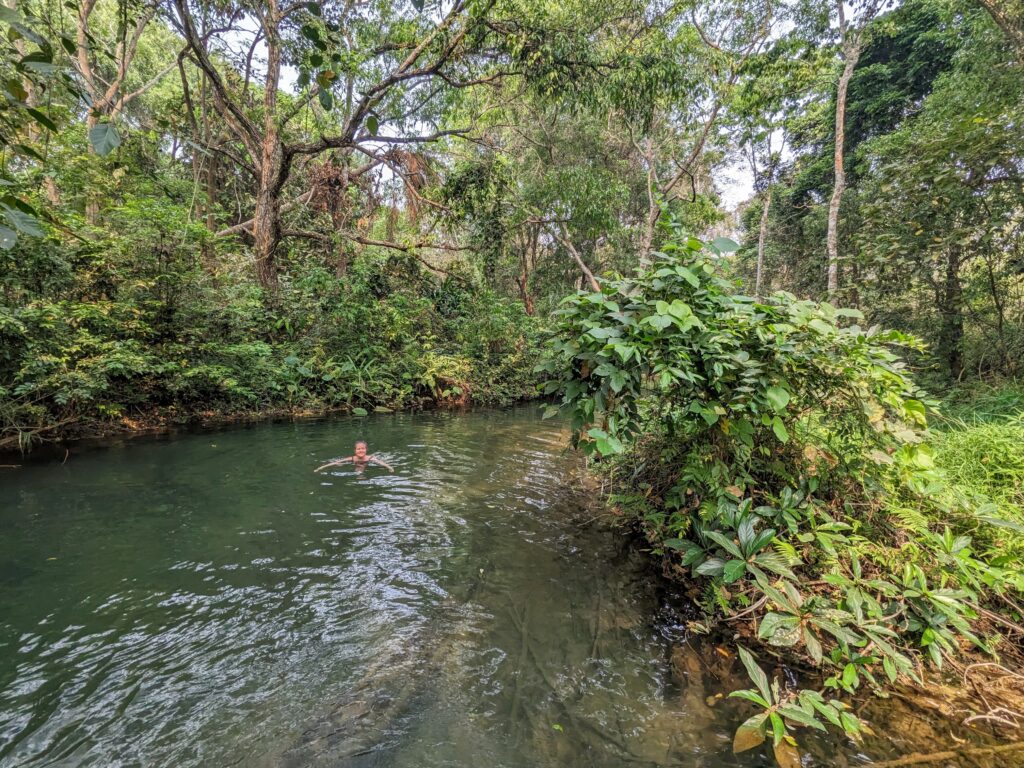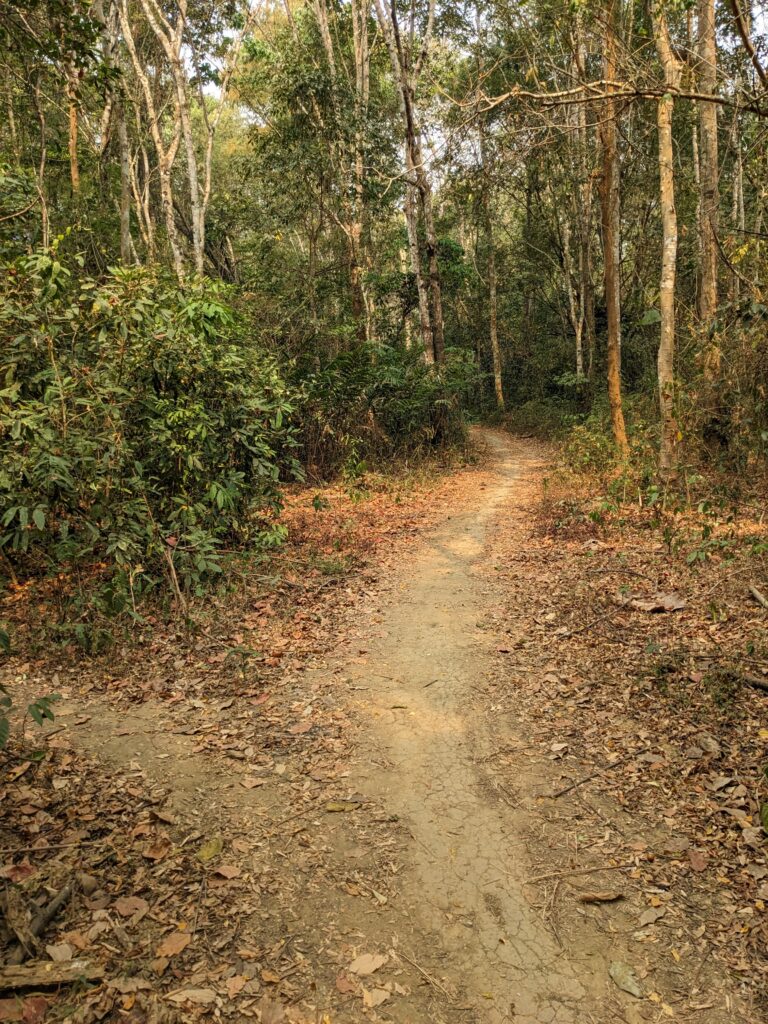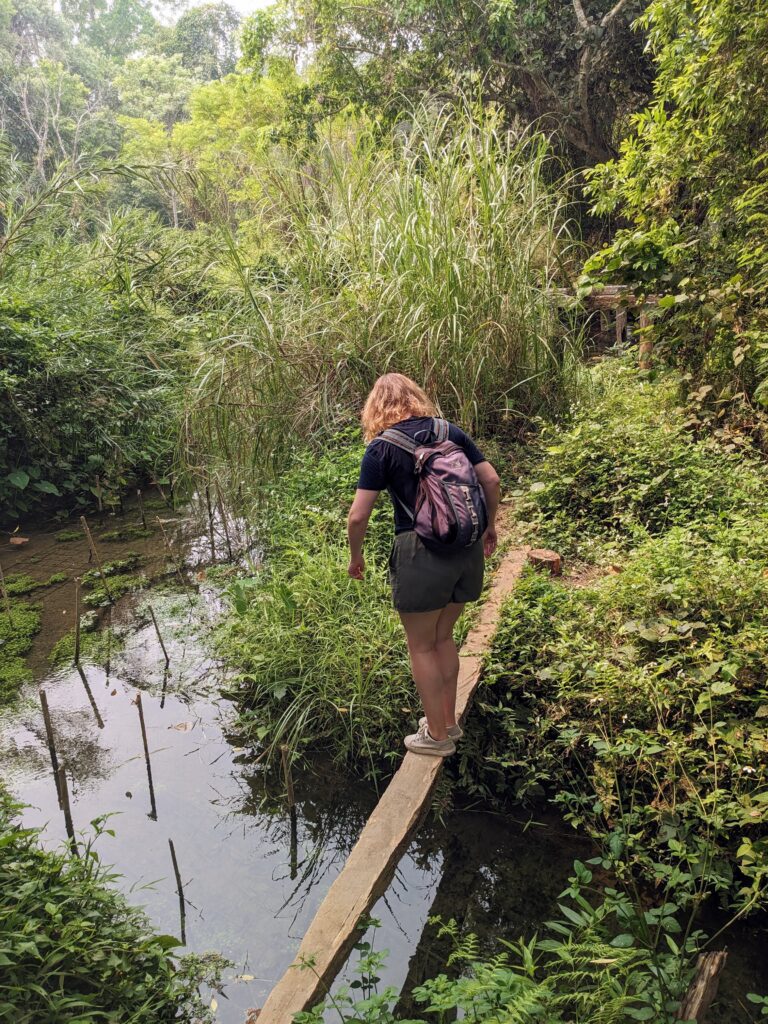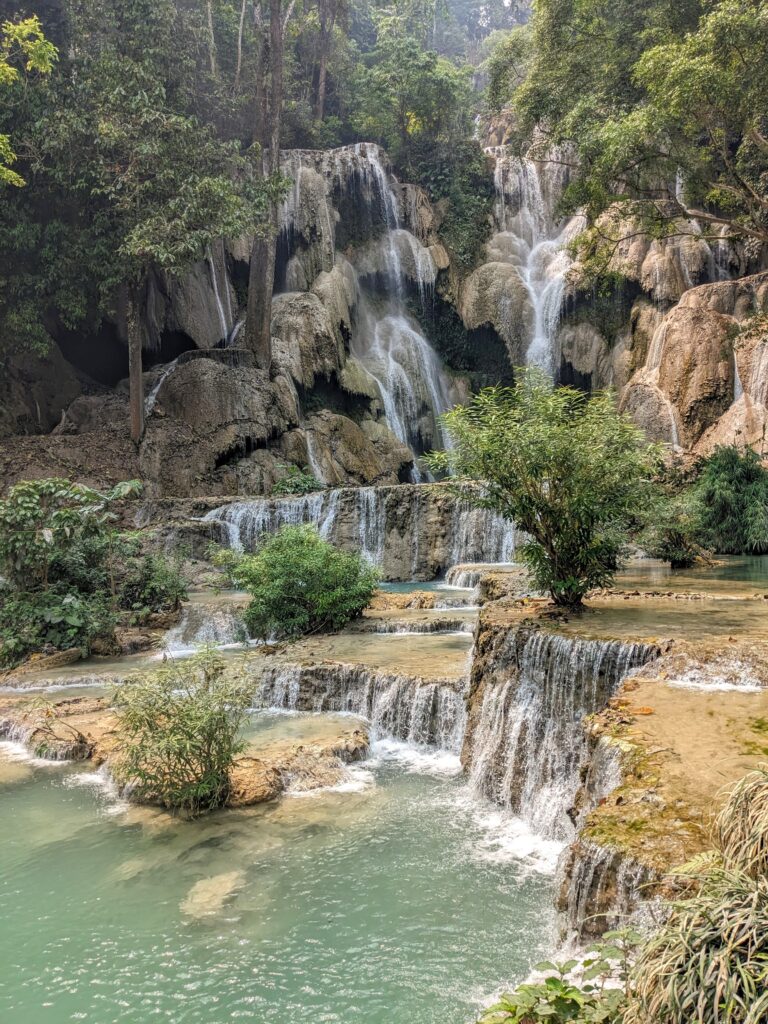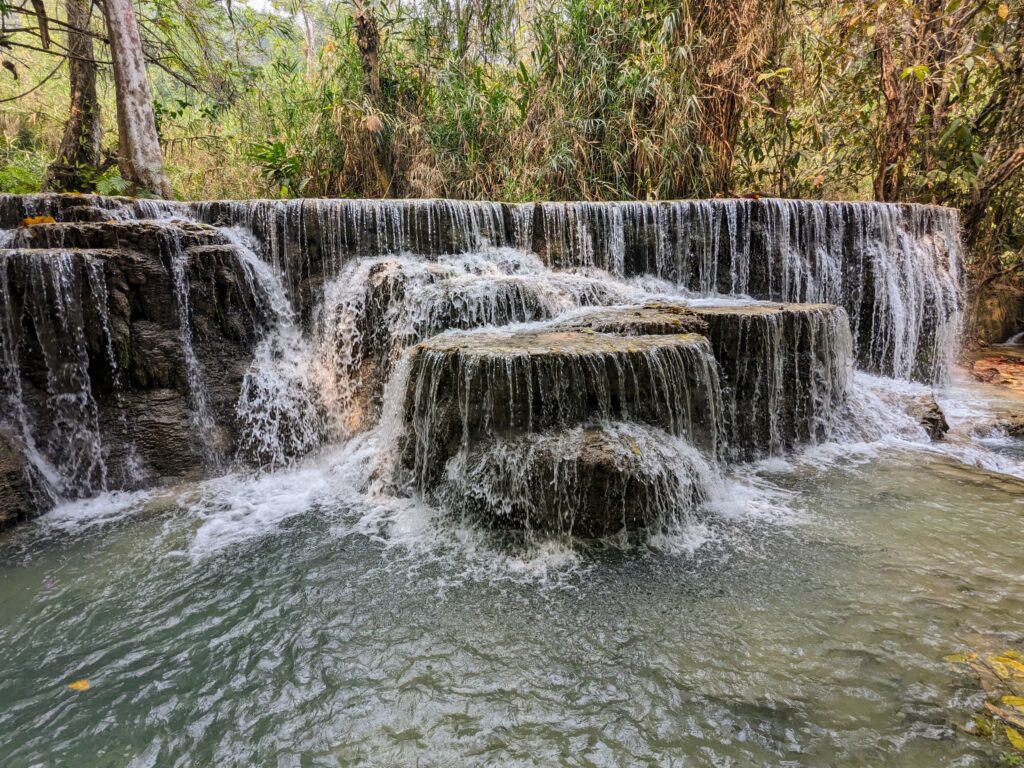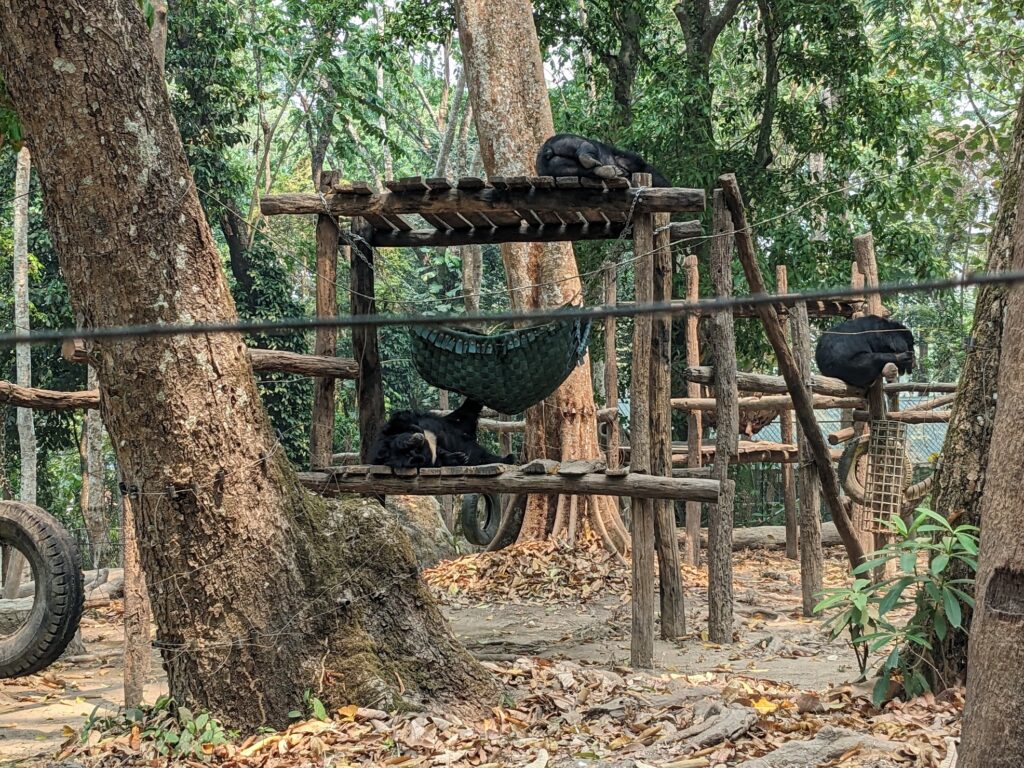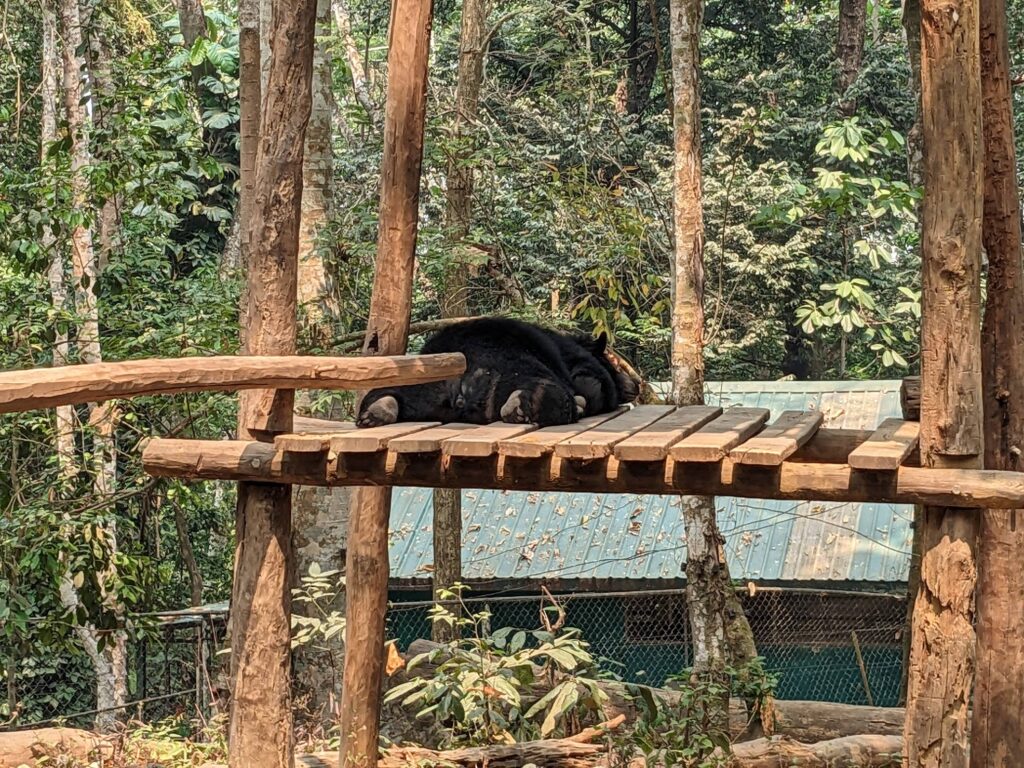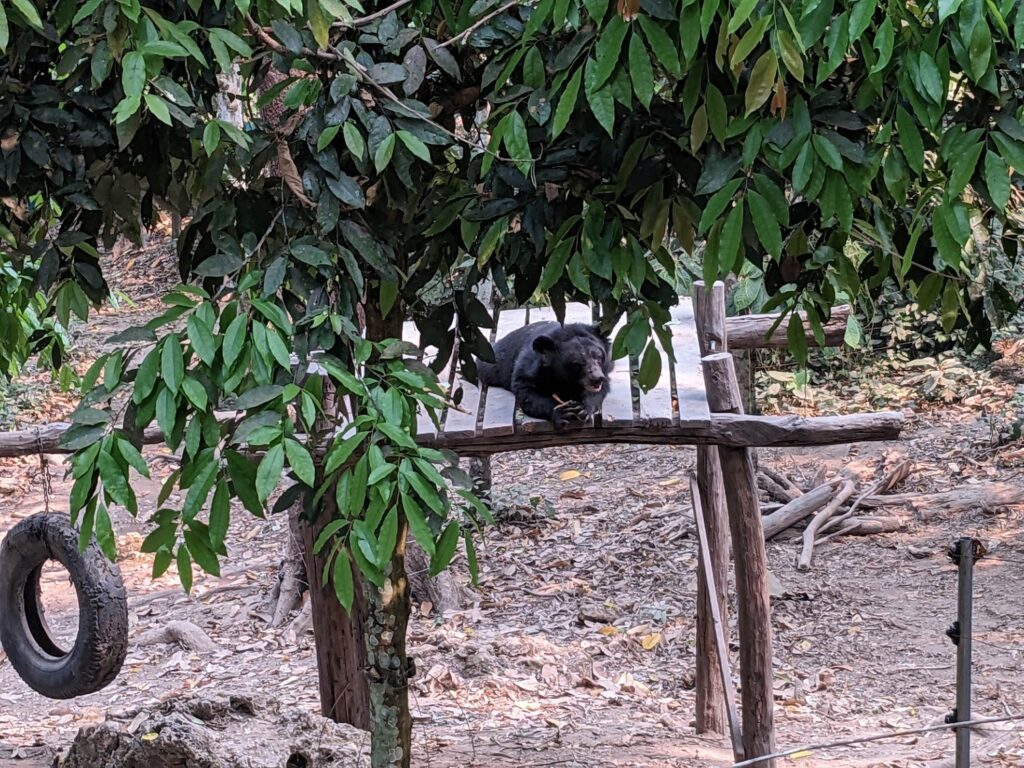Our second destination in Laos was Luang Prabang, a UNESCO-listed World Heritage Town, located in the north of the country at the confluence of the Nam Khan River and the Mekong River.
The train
The super-modern, high-speed Boten–Vientiane railway links the Lao cities of Vientiane and Luang Prabang before heading for the Chinese border, and we were keen to make use of it on our journey through Laos. The owner of our guesthouse in Nong Khai had recommended that we “start working on the train tickets” as soon as we arrived in Vientiane, since acquiring said tickets was “a process”. Having bought a few tickets on this trip so far, I was pretty confident, until I hopped onto the Man In Seat 61‘s site and finally understood what Julian was talking about. It turns out that you can’t buy tickets online, the station is 13 km outside of the city, and the city centre booking office doesn’t accept cash or international credit cards! Reluctantly, we bought our tickets through an agent, with the inevitable commission added on top.
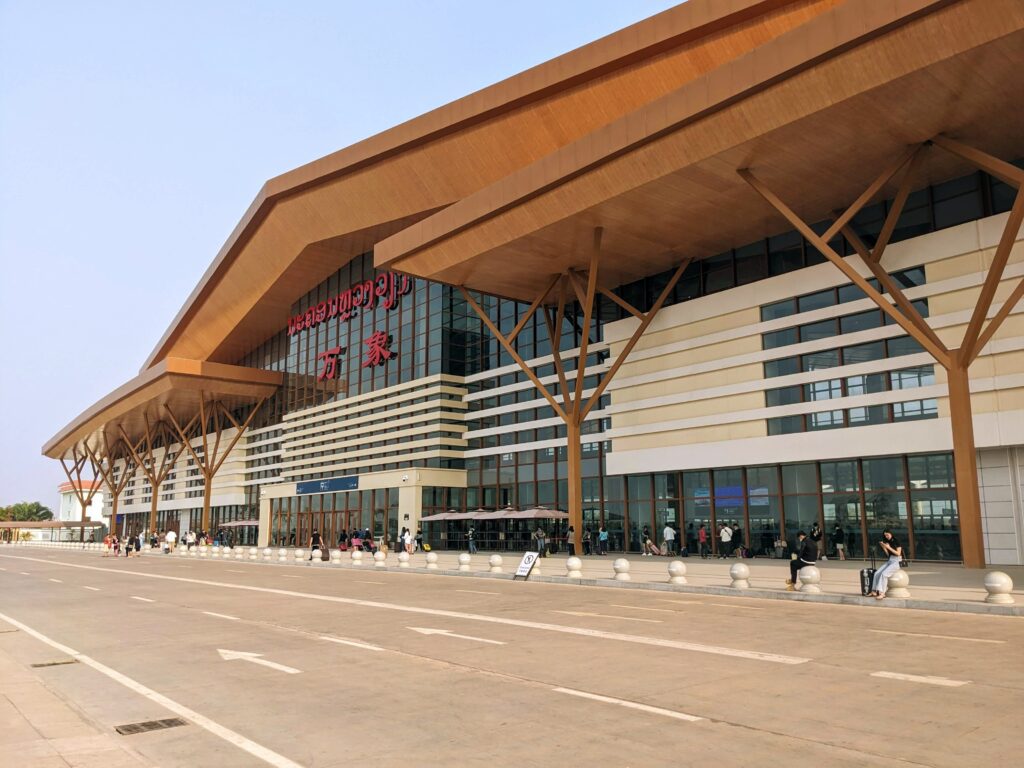
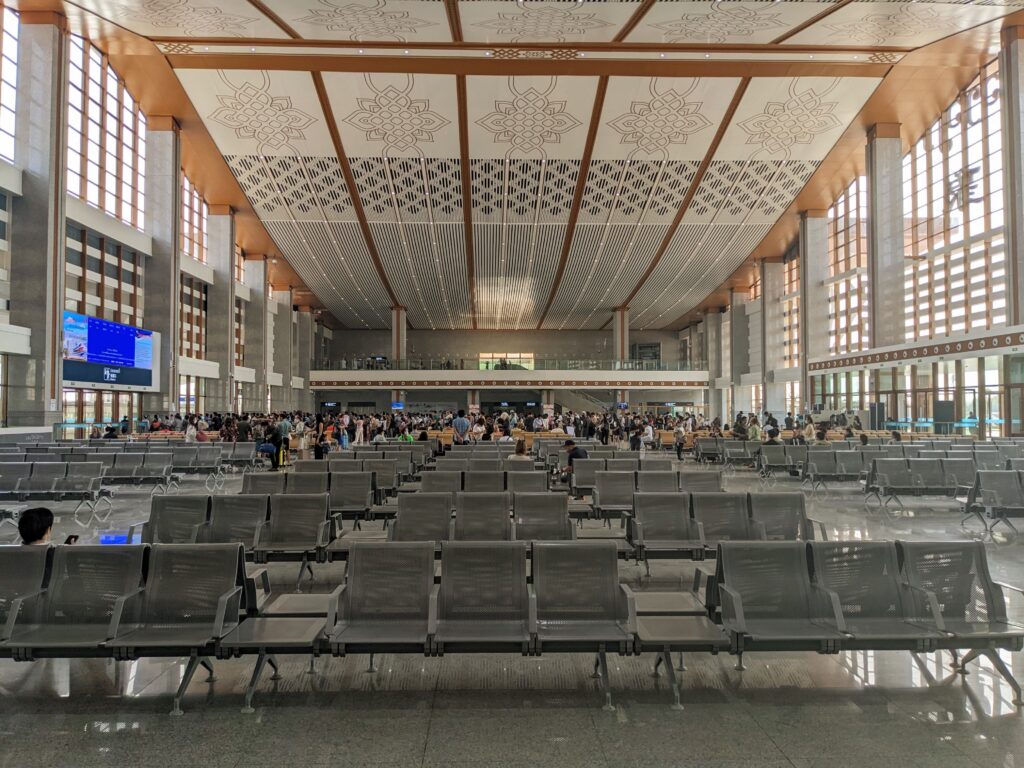
The train line is very impressive and almost brand new, given that passenger services only commenced in December 2021. The railway is a joint project between the Laotian and Chinese governments, and it represents the largest and most expensive infrastructure project in Laos ever. Our trip took only 1 hour 40 minutes to cover 238 km – a journey that otherwise would have taken at least 6 hours by road.


We completed the final hop from Luang Prabang train station to the city centre by a public minibus. This would have been a quick journey, had our fellow passengers not stopped the minibus for a lengthy interrogation of the poor driver regarding where they should disembark. It seems not everyone enjoys a good game of public transit roulette as much we do!
The town
The city centre of Luang Prabang is beautiful, and it exceeded both of our expectations. Almost every building was a tastefully-restored colonial building, with a traditional wooden sign above the front door of the business. For this reason it gave us Hội An vibes, but despite how many hotels and restaurants there were around the town centre, it rarely felt busy.

We were also fascinated by the pair of bamboo bridges that cross the Nam Khan River. We’d heard that each bridge is carefully constructed each year over a one-week period at the start of the dry season, and dismantled again before the wet season arrives and the river levels rise. Confusingly though, both bridges were in the process of being taken apart as we arrived despite it being the middle of the dry season. Clearly, the owners of the bridges knew something that we didn’t…
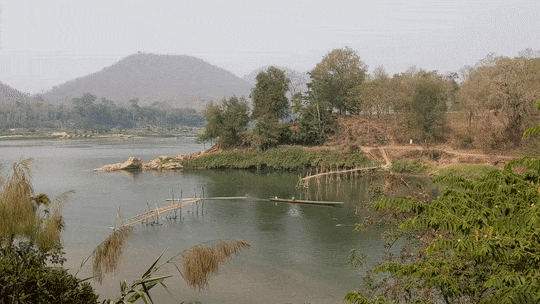
The waterfall
Just 30 km from Luang Prabang lies Kuang Si falls – a 60 m high cascade of water turned bright blue by the river’s limestone deposits. Following our recent success at the Angkor Wat, we opted for an early Tuk Tuk to the falls in an attempt to beat some of the crowds. We started the visit with a hike to the top of the waterfalls, where we followed a footpath away from the cliff and across a single plank bridge (!) to the source of the falls. Just as we’d hoped, we were the only ones there, and enjoyed a swim in the (very fresh!) water as it ran towards the falls.
On our way back down, we stopped for a swim at a few of the vividly blue travertines. The pools were absolutely stunning, and actually they weren’t nearly as busy as we’d feared – the whole place looked like the Garden of Eden.
But the best part of the waterfalls was possibly the bear sanctuary near the entrance. The sanctuary provides a very comfortable home to wild Asiatic Moon Bears that have been rescued from poachers who had previously kept them in cages for their valuable bile. Any bears that can’t be safely released back into the wild are given a home here or at one of the other sanctuaries run by Free the Bears. The bears seemed to love the wooden constructions in their enclosure – most of them were snoozing with one or two legs draped over the edge, and one was even relaxing in a hammock!
The hill
Soaring above Luang Prabang is Phousi Hill – a popular spot to watch the red sunset reflected in the Mekong River. Due to a scheduling anomaly, we arrived at the summit more than two hours before sunset, so we enjoyed the views through the haze from a rocky outcrop before plonking ourselves down on a bench to appreciate any hint of a passing breeze.
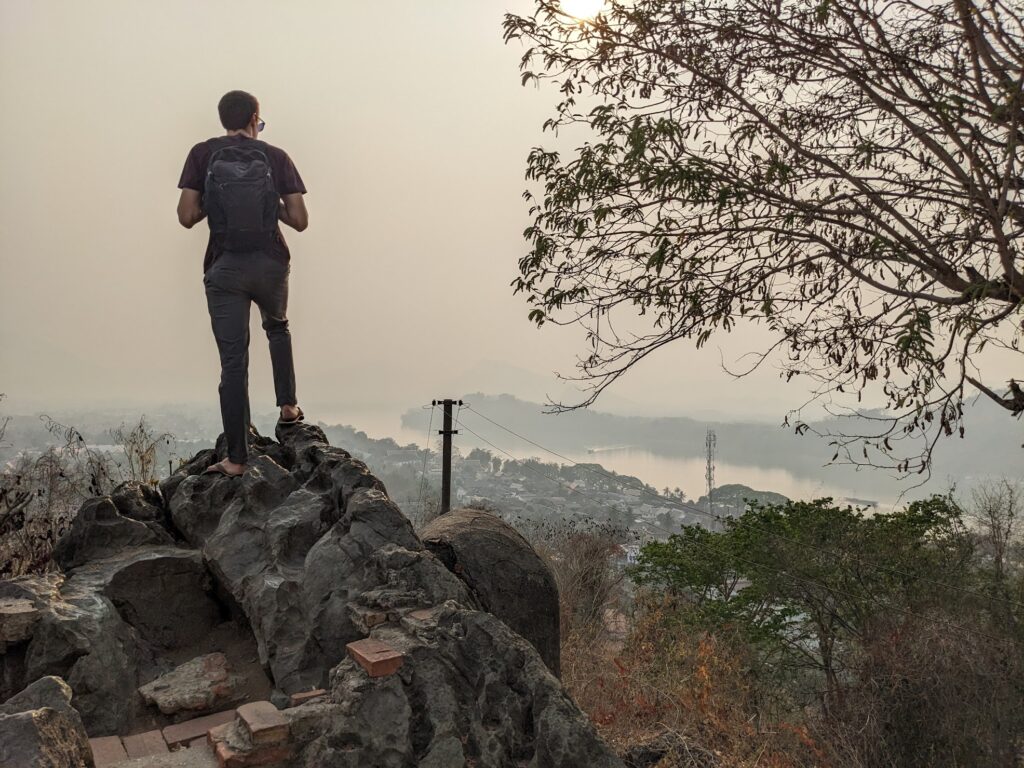
What followed sounded similar to everyone else’s experience at Angkor Wat, as our sunset view was gradually replaced by a view of other tourists’ backs. At times like this, I try to remind myself that we’re not in traffic, but we are traffic, so we did our best to enjoy the people watching in lieu of the sunset. Fortunately, we’d also brought couple of beers, which made the experience a lot more enjoyable than it could have been!

The food
Luang Prabang has a reputation for its international (read: French) cuisine, which seemed to cater exclusively to tourists. However, as is often the case, we found that the best food we ate was in local restaurants. One of our favourite meals was at a restaurant just around the corner from the Xieng Thong temple, where we tried Kow Beeak Sen – a soup containing slightly chewy tapioca noodles, pork, fried garlic and plenty of fresh bean shoots. To this, we added a squeeze of lime and a teaspoon of fiery chilli paste, which further elevated the experience. In fact, this really elevated the experience for Sara, since I put a very generous dollop into her bowl. By the end of the meal, she had a couple of tears running down her cheek, but still insisted she wouldn’t have it any other way!

We also thoroughly enjoyed eating at Nang Tao restaurant, where we tried Laap, a Lao favourite stir fry of meat, onion and fresh mint. I loved the contrast of the fresh herbs against the saltiness of the meat, and vowed to eat this dish a few more times before leaving Laos.
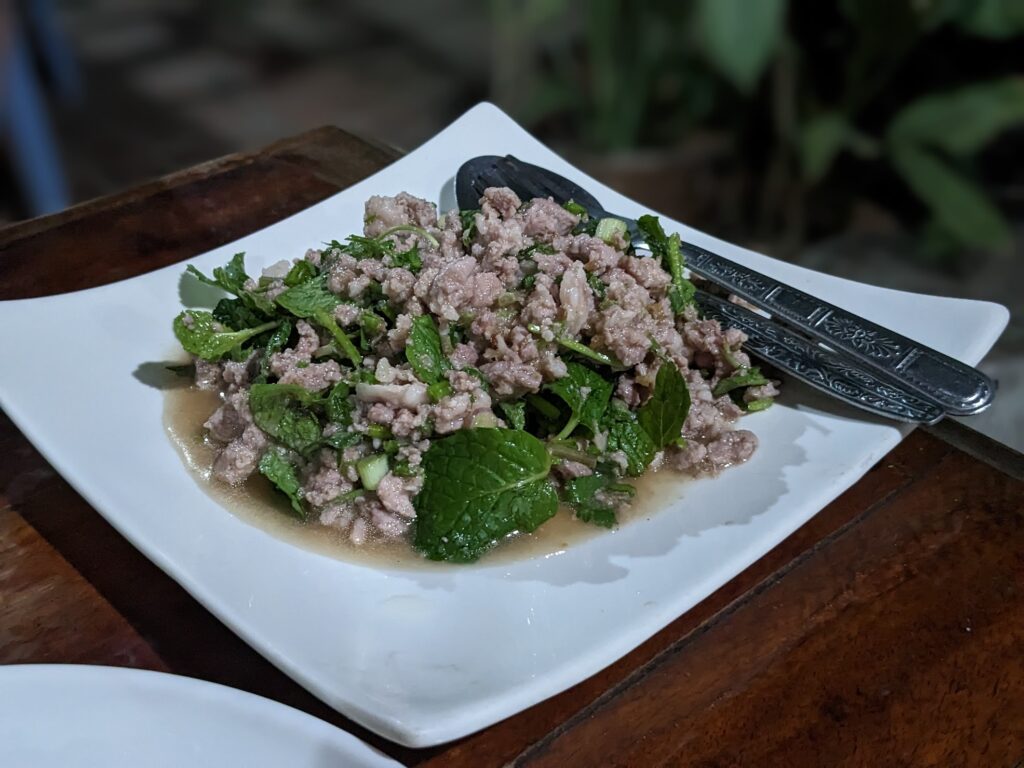
Having zoomed north by rail, it was now time to fully embrace travelling slowly with a two-day cruise up the mighty Mekong River towards the golden triangle where Laos, Thailand and Myanmar meet.
